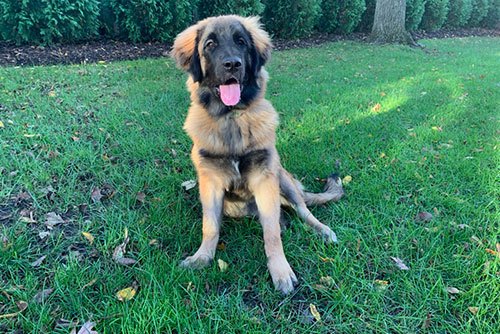It’s a good idea to play puppy games with your new pet to help socialize, train, and prepare them for life as well-adjusted, well-mannered adult dogs. Even though puppies spend most of their time resting, when they do wake up, they have a lot of energy to burn.
At K-9 Reading Buddies of the North Shore, we know that some adult dog games may be too challenging for puppies, and many of these games involve command information that puppies haven’t acquired yet. As opposed to dog training, puppy games help your pup learn while also wearing them out physically, so they’re well-behaved the remainder of the day.
You must be careful not to overexert your puppy when engaging in any game with him since this could harm his health and undermine all your hard work training him. To prevent your puppy from becoming bored and uninterested, keep your play sessions short. As long as they’re having fun while learning something, they’ll be a lot more content and eager to return to the game later.
Types Of Socialization Games You Can Play With Your Pup
You can start with some elementary games and see how your puppy reacts to them. Change up the routine a little to keep things interesting for your pup. Here are some exciting and engaging socialization games you can play with your puppy:
- Teach Them Socialization In A Group
Invite two or more people to the game. Form a circle with your friends and place the pup in the center. You will give a treat and praise the puppy if he obeys the person calling out ” come here” in a warm and joyful voice. After that, it’s the turn of the next person, who repeats the previous person’s actions. You can increase the distance the puppy has to run to reach you once the game runs well. Again, don’t push your pet to go to someone if he doesn’t want to, and don’t make him forcibly play with them.
- Get Your Puppy Acquainted With the Neighborhood
Take your puppy on adventures to new locations to broaden her horizons. Bring her some treats and make sure she has fun. Take her to places where animals are allowed, such as pet stores or parks. Bring a washable mat with you and place it in the bottom of your shopping cart if you’re concerned about disease. Make a pup cart for her and let him socialize while she rides about.
Take your puppy to neighbors who have healthy, immunized dogs who can play with your furry friend safely. Check to see if their pets are fond of puppies, although this may not always be the case. Is it okay if you bring your dog to work with you? Is there a nearby daycare where you can take your pup to get her used to being around kids? Your puppy will be less afraid of the world if you expose her to as many new places and situations as possible.
- Introduce Sounds in Play
Loud sounds scare off many puppies. Introducing her to them is the most straightforward thing for you to do now. What’s the best way to go about it? Start with something simple, like a hairdryer. To begin with, keep the dog at a safe distance and use the equipment for a brief period before turning it off.
Analyze your dog’s reaction to decide how to proceed. Does it mean she wants to know where the noise is coming from or is it frightening for her when she barks? Reduce the volume or go further away if she appears scared. Move closer to her once she becomes adjusted to the noise. She’ll eventually stop caring about it as she will get conditioned to it.
- Sit When You are Petting Your Puppy
Do you want a dog that won’t leap on you when you’re not looking? Teach your puppy to sit before petting him. Slowly move a treat backward over his head. The dog’s rear should drop as he reaches for the treat, then give it to him as soon as he sits down.
This hand motion will become your sit signal if you’ve achieved five consecutive sits while holding nothing in your hands but the treat you’ve previously taught your dog to use as a reward.
Using hand gestures is more intuitive for dogs than using spoken commands. You can achieve a reliable response to the hand gesture by first using a verbal cue like “sit” and using your hand signal along with it. When your dog sits, reward them with food. Many therapy dogs respond to calls like these, and your training conditions your puppy to be comfortable around people of different ages.
- Use a Collar For your Puppy
You may have to swiftly grab your dog by the collar if she eats something or goes someplace she shouldn’t. You can use this to see if there are any issues, whether she shies away from getting her collar grabbed, and whether or not she reacts violently. Repeat this step as many times as necessary to become proficient at the collar game.
- Play Tug-Of-War With Your Puppy
Take a tug-of-war toy with you. Put one part in the puppy’s mouth while holding the other end in your hand. Praise him as you go along, so he knows it’s okay to play with the toy. This approach will discourage your beloved pet from engaging in possessive behavior, such as forcefully defending his toys.
Dedicate some time every day to playing some of these exciting socialization and training games with your puppy. You can involve family and friends in these activities to keep your furry friend interested and happy. As your pup grows older, you will find that all your persistence and patience have paid off and that she is more well-behaved and comfortable.
For information on K-9 Reading Buddies of the North Shore‘s services, send us an email through this form. One of our team members will contact you shortly to discuss the details of our certified therapy dog programs for children with disabilities.



